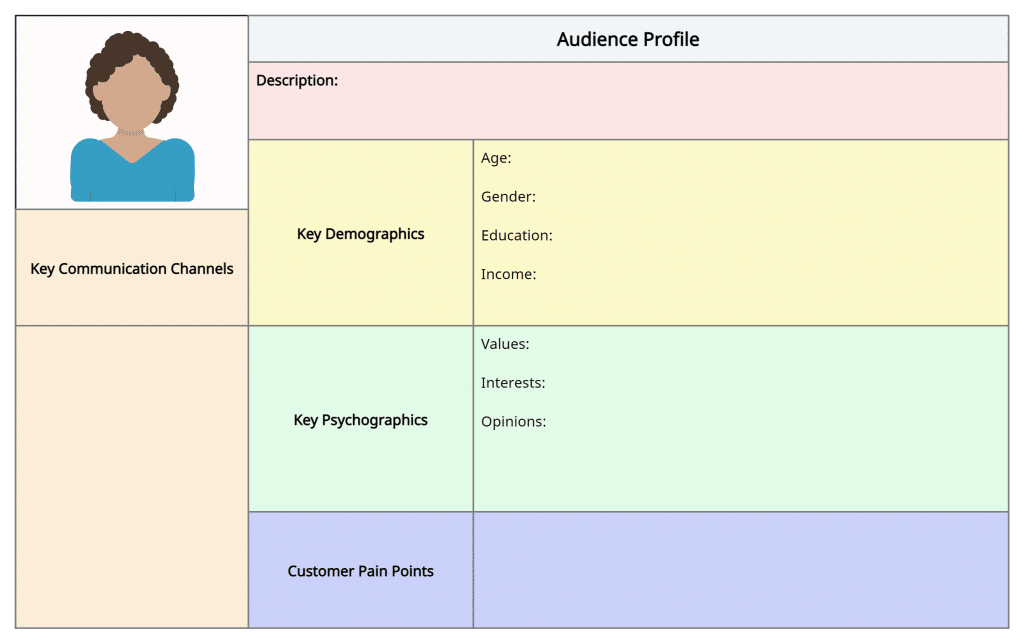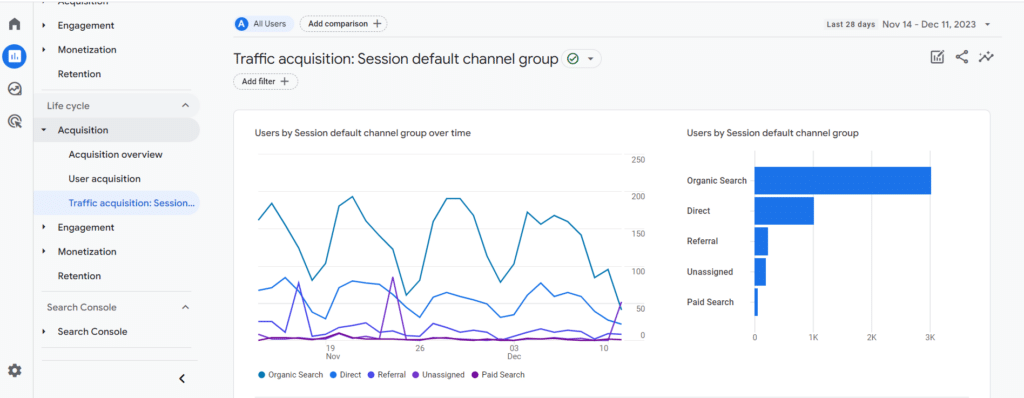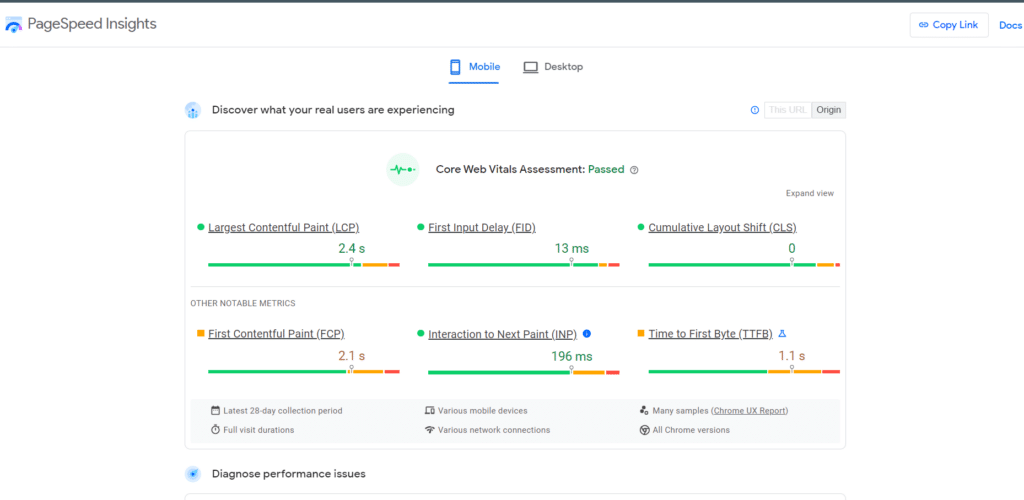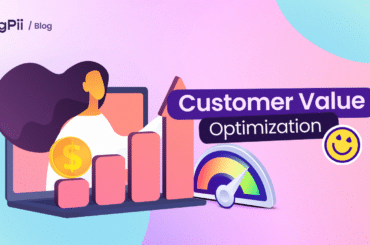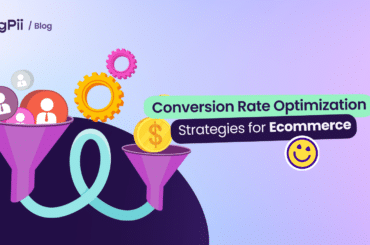Have you ever wondered why some visitors on your website don’t end up as customers, even though they seemed interested?
This is where a Conversion Rate Optimization audit steps in. Think of it as a health check for your website, but instead of checking for physical wellness, it examines how effectively your site turns visitors into customers.
A Conversion Rate Optimization audit is a detailed evaluation of your website’s elements and performance metrics. It’s a process designed to understand how your site converts visitors into customers.
A CRO audit examines every part of your website. You examine the design, how content is presented, how easy it is for users to navigate, and the effectiveness of calls to action. The purpose is to discover what’s working well and, more importantly, what isn’t.
The key focus of a CRO audit is to identify obstacles that stop visitors from converting. These could be issues like a complicated navigation system, unclear messages, or a checkout process that takes too long.
In short, a CRO audit gives you the insights needed to make your website attract visitors and effectively convert them into customers.
Steps to Conduct a CRO Audit?
Conducting a Conversion Rate Optimization audit is a structured process that requires a systematic approach.
It’s about diving deep into the workings of your website to understand and enhance how visitors interact with it and, ultimately, how they convert into customers.
This process involves several key steps, each designed to uncover specific insights and opportunities for improvement.
Now, let’s walk through the steps to conduct a comprehensive CRO audit.
-
Define Goals and KPIs
At the outset of a CRO audit, it’s essential to establish what success looks like for your website. This involves setting clear, specific goals that reflect your business objectives.
Whether it’s increasing sales, boosting sign-ups, or enhancing user engagement, defining these goals gives you a benchmark to measure your website’s performance.
Alongside setting goals, tailoring Key Performance Indicators is crucial. KPIs are the metrics that will help you track whether you’re meeting your goals. They should be directly aligned with your objectives.
For example, if your goal is to increase sales, relevant KPIs include the conversion rate, average order value, or cart abandonment rate. These KPIs will guide your decisions throughout the CRO process.
It is also important to incorporate the SMART (Specific, Measurable, Achievable, Relevant, Time-bound) framework into your goal-setting process. SMART goals ensure that your objectives are clear and achievable within a specific timeframe.
For instance, aiming to “increase website traffic by 30% within the next six months” is a SMART goal. It’s specific, measurable, achievable, relevant to your business growth, and time-bound.
This approach provides a clear roadmap for your CRO audit and makes it easier to track progress and adapt strategies as needed.
-
Identify Your Ideal Customer
A critical step in a CRO audit is identifying your ideal customer. This process involves creating detailed customer personas, which are semi-fictional representations of your ideal customers based on data and research.
These personas help you understand who you’re trying to attract and what their needs, challenges, and behavior patterns are.
Creating these personas involves gathering and analyzing data about your current customers.
Some of the important factors to consider include:
-
Psychographics
It focuses on your customers’ psychological attributes, like interests, values, and lifestyles. This helps tailor your website’s messaging to resonate with their motivations and preferences.
-
Pain Points
Identifies the challenges or problems your customers face that your product or service can solve. Highlighting solutions to these pain points on your website makes it more relevant and compelling.
-
Demographics
This involves basic statistical information about your customers, such as age, gender, and location. This data guides broad optimization decisions to better suit these characteristics.
-
Online behavior
This involves checking how your customers interact online, browsing habits and social media use. Understanding this helps optimize your website’s user journey to match their online preferences.
This information helps in crafting personas that accurately represent the different segments of your audience.
Understanding your audience deeply influences your CRO strategies. It allows you to tailor your website’s content, design, and user experience to meet your target audience’s needs and preferences.
-
Traffic Analysis
The next step in your CRO audit is conducting a thorough traffic analysis. This involves assessing the various sources of traffic to your website and understanding the different types of visitors each source brings.
Firstly, identify where your traffic is coming from. Is it flowing from search engines, social media platforms, email campaigns, or paid ads?
Each of these sources contributes differently to your website’s traffic profile. For instance, visitors from search engines might have a different intent than those from social media.
Tools To Use For Traffic Analysis
- Google Analytics: This is a fundamental tool for any website owner. It offers a wealth of information about your traffic sources, user behavior, and conversion metrics. Look for trends in traffic sources (organic, direct, referral, social, and paid) and monitor how different types of traffic behave on your site.
- SEMrush or Ahrefs: These tools are useful for understanding your organic search traffic. They can provide insights into the keywords driving traffic to your site, the ranking of your pages in search results, and how your organic traffic compares to your competitors.
- FigPii: This is a complete CRO tool with a heat mapping feature that visually represents where users click and scroll on your site. Data from FigPii can be incredibly insightful for understanding how users interact with your pages.
Understanding user intent based on the traffic source is crucial. Visitors from organic search might be looking for information or solutions to a problem, while traffic from a targeted ad campaign might be more ready to purchase.
Recognizing these differences allows you to tailor your website’s content and user experience to meet these varied needs and expectations.
Another key aspect is correlating the quality of traffic with conversion rates. Not all traffic is equal – some sources might bring in large volumes of visitors but with lower conversion rates, while others might bring fewer visitors who are more likely to convert.
Analyzing this relationship helps you focus your efforts on optimizing sources that bring in high-quality traffic.
-
Conduct Website Analysis
After understanding your traffic, the next step in a CRO audit is conducting a comprehensive website analysis.
This step involves delving into your site’s structure, content, and functionality to ensure they all work together seamlessly to support your conversion goals.
-
Reviewing Website Structure, Content, and Functionality
Start by examining your website’s overall structure. Is the navigation intuitive? Do users find it easy to locate information or products?
Also, assess the quality and relevance of the content on your site. It’s not just about what you say but how you say it. Is the content engaging, informative, and aligned with user intent?
Additionally, evaluate your website’s functionality. This includes checking if all features are working correctly and the site is easy to use.
-
Identifying Technical Issues
Technical issues can significantly impact the user experience and your conversion rates. Look for common problems like slow page load times, broken links, or images that don’t load correctly.
These issues can frustrate users and cause them to leave your site without converting. Tools like Google PageSpeed Insights can be invaluable in identifying and resolving these technical issues.
-
Using Analytics for Performance Insights
Leverage analytics tools to gain deeper insights into how users interact with your site.
Analytics can provide valuable data on aspects like which pages have the highest engagement, where users typically drop off, and how different audience segments interact with your site.
This data is crucial for understanding the strengths and weaknesses of your website from a performance standpoint.
-
Identify Site Usability Issues
Identifying site usability issues is important as it directly impacts how users interact with your website.
Start by pinpointing common usability problems that can hinder the user experience. These issues often include slow page load speeds, which can test your visitors’ patience, and broken links, which can lead to frustration and mistrust.
Conducting usability tests is an effective way to gather direct feedback from users. These tests can be as simple as asking a few users to complete tasks on your site while observing their behavior.
This approach helps you understand the user experience from their perspective, revealing issues you might not have noticed otherwise.
Implement strategies based on the feedback and data gathered to enhance site usability. This might involve optimizing images and scripts to improve load times or revising your site’s architecture to make navigation more intuitive.
-
Review Conversion Elements
Reviewing conversion elements involves a detailed analysis of key elements on your website that directly contribute to converting visitors into customers.
Focus on elements like Calls-to-Action, forms, and landing pages. Each plays a pivotal role in guiding and persuading users to take the desired action, whether purchasing, signing up for a newsletter, or downloading a resource.
When analyzing these elements, consider the best practices for optimization.
- For CTAs, this might mean using action-oriented language, placing them strategically on the page, and ensuring they stand out visually.
- For forms, simplicity is key; ask only for essential information to reduce friction and abandonment.
- Landing pages should be focused, relevant to the user’s intent, and free from distractions that could divert the user from the conversion goal.
It’s also important to identify common conversion blockers. These could be unclear or unappealing CTAs, lengthy and complicated forms, or landing pages that don’t match the user’s expectations set by the ad or link they clicked.
-
Conversion Funnel Assessment
In a Conversion Rate Optimization (CRO) audit, assessing the conversion funnel is necessary.
This process involves mapping a customer’s journey from the first interaction with your website to the final conversion point.
The goal is to identify where potential customers are dropping off in this funnel and understand why.
Start by mapping out each stage of your conversion funnel. This could range from a user landing on your website to viewing a product, adding it to their cart, and finally completing a purchase.
At each stage, look for drop-off points where users leave the funnel without converting. Once you’ve identified these drop-off points, develop strategies to optimize each stage of the funnel.
This might involve simplifying the checkout process, making navigation to key web pages more intuitive, or enhancing product descriptions and images to engage users better.
Analyzing user behavior is key to improving funnel efficiency. Use tools like Google Analytics to understand how users move through your funnel. Look for patterns in how different user segments interact with each stage.
-
Analyze Data and Identify Issues
Analyzing data and identifying issues is a fundamental step in your CRO audit. This process involves delving into your website’s analytics to uncover trends and pinpoint specific issues affecting your conversion rates.
Start by interpreting data from your analytics tools. Look beyond basic metrics like page views or session duration.
Dive into more nuanced data such as user flow, exit pages, and conversion paths. This analysis can reveal trends and patterns indicating where users are engaging well with your site and encountering problems.
Use this data to inform your CRO strategies. By understanding where users are dropping off or which pages have the lowest conversion rates, you can prioritize which areas of your website need the most attention.
Data also plays a crucial role in hypothesis formation. Based on your analysis, you can develop hypotheses about why specific issues are occurring.
For example, if a page has a low conversion rate, you might hypothesize that the call-to-action needs to be clearer and compelling enough. These hypotheses can then be tested through A/B testing, allowing you to refine your approach based on what works best.
-
Develop Hypothesis and Run A/B Tests
In this stage, you apply the insights gained from your data analysis to make informed changes to your website.
Start by creating hypotheses based on the analytical insights you’ve gathered. These hypotheses should be specific and testable statements addressing your identified issues.
For example, if your data shows that users frequently abandon their carts, your hypothesis might be that the checkout process is too complicated or time-consuming.
Once you have your hypotheses, the next step is to design practical A/B tests to validate them.
When conducting A/B tests, follow these practices:
- Use a Significant Sample Size: Ensure that your test runs long enough to gather data from many users. This increases the validity of your results.
- Be Patient: Give the test sufficient time to produce meaningful data. Rushing the process can lead to inaccurate conclusions.
- Analyze Results Thoroughly: Analyze the A/B Test results carefully after the test period. Look at which version performed better and try to understand why.
- Implement Changes Based on Results: If your hypothesis is correct, implement the successful changes. If not, use the insights gained to refine your hypothesis and test again.
-
Prioritize and Implement Changes
Prioritizing and implementing changes is the final step in your CRO audit. This phase involves taking action based on the insights and hypotheses you’ve developed through your analysis and testing.
Start by deciding which changes to implement first. This decision should be based on the potential impact of each change.
Prioritize modifications likely to affect your conversion rates significantly and are relatively straightforward to implement.
For example, if A/B testing indicates that a new CTA button color markedly increases click-through rates, prioritize updating the CTA color across your site.
When implementing these changes, it’s important to do so in a controlled and measurable way. Make adjustments systematically and ensure that you can measure the impact of each change.
After implementing the changes, continuously monitor their impact. Use the same metrics and KPIs you established at the beginning of your CRO audit to assess the effectiveness of these changes.
Learning from Conversion Rate Optimization Audit and Iterating
Learning from the audit and iterating is essential to the CRO process. It’s where you take stock of your changes and understand their impact.
This step is not just about celebrating successes or identifying shortcomings; it’s about fostering a culture of continuous improvement.
Start by analyzing the outcomes of the changes you’ve implemented.
Look at your website’s performance data before and after the changes. Did the modifications meet the expectations set out in your goals and KPIs? Understanding the impact of these changes is crucial, as it informs your next steps.
Remember, CRO is not a one-and-done deal. It’s a continuous process of testing, learning, and optimizing. What works today might not be as effective tomorrow. Therefore, it’s important to keep testing new ideas, learning from the results, and optimizing further.
Why should You conduct a CRO Audit?
-
Improving Conversion Rates
The primary goal of a CRO audit is to increase the percentage of website visitors who take a conversion-related action on your website. By identifying and fixing issues that hinder conversions, you can significantly boost your site’s effectiveness in turning visitors into customers.
-
Enhancing User Experience
A CRO audit involves a thorough review of your website’s user experience (UX). By making your site more user-friendly and engaging, you improve the likelihood of conversions and enhance overall customer satisfaction, which can lead to repeat visits and referrals.
-
Cost-Effectiveness
Investing in a CRO audit can be more cost-effective than spending on attracting new traffic, especially if your current traffic is not converting at a high rate. When you optimize your site for conversions, you use existing traffic better, potentially yielding a higher return on investment.
-
Data-Driven Decisions
A CRO audit provides a data-driven approach to website optimization. Instead of making changes based on assumptions, you use actual user data to guide your decisions. This approach ensures that the changes you make are targeted and effective, leading to better outcomes.
Conclusion
A CRO audit helps you identify where your website can improve its ability to convert visitors into customers.
Following a structured approach, such as defining goals, analyzing traffic, reviewing conversion elements, and testing changes, allows you to make data-driven adjustments that lead to better results.
Remember, CRO is an ongoing process, so keep refining and optimizing to achieve continuous growth.
CRO Audit FAQs
What is a CRO audit?
A CRO audit is a detailed evaluation of your website’s elements and performance metrics to understand how effectively it converts visitors into customers. It analyzes design, content, user experience, and technical issues to identify obstacles and opportunities for improving conversion rates.
What is the CRO process?
The CRO process involves a structured approach to improving conversion rates by analyzing traffic, identifying user behavior, testing hypotheses, and implementing changes based on data. It includes defining goals, examining user interactions, running A/B tests, and optimizing key conversion elements like CTAs, forms, and landing pages.
What is CRO assessment?
CRO assessment is reviewing and analyzing your website’s performance to understand its effectiveness in converting visitors. This involves assessing usability, traffic quality, and conversion funnels to pinpoint issues and develop strategies for improvement.


